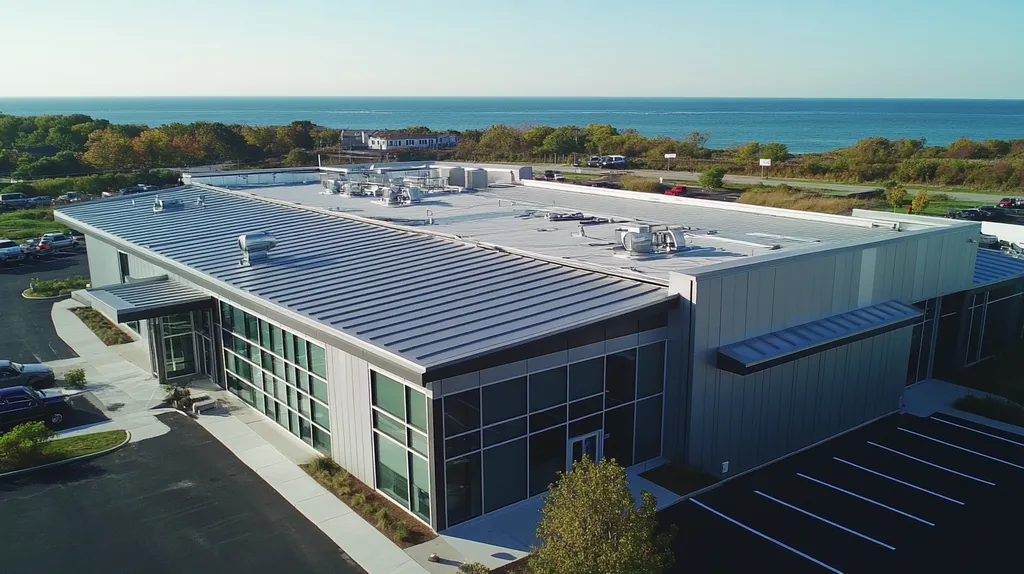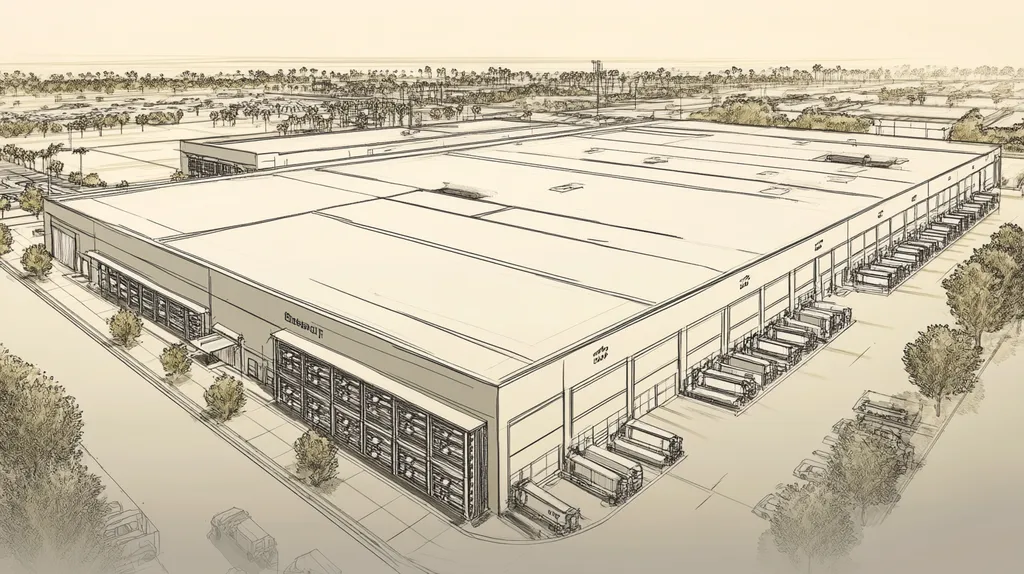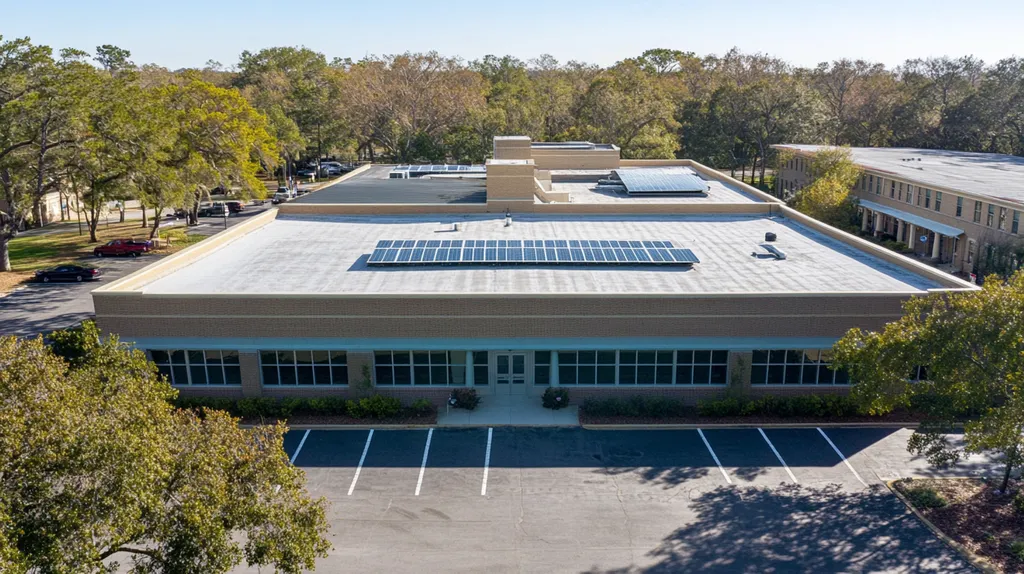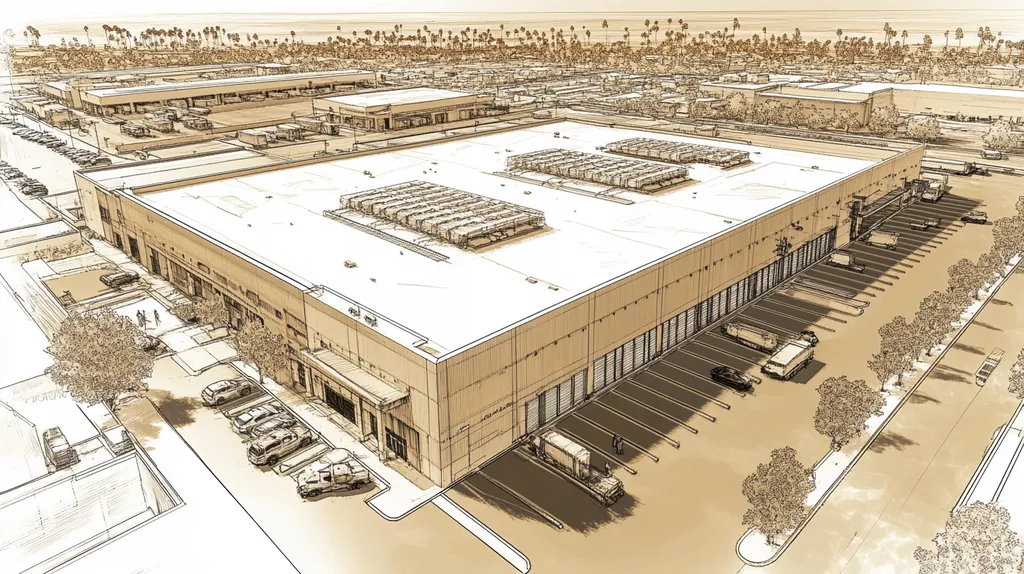Commercial roofing contractors face a crisis in insurance claims management, with industry data showing that 60% of claims are initially denied due to procedural missteps and documentation gaps.
These denials cost property owners millions in out-of-pocket expenses annually, while putting contractors’ reputations and client relationships at risk.
This analysis challenges traditional approaches to commercial roof insurance claims, revealing systemic flaws in current practices and offering data-driven solutions that can transform outcomes for both contractors and property owners.
SECTION 1: CURRENT PRACTICES
For commercial property owners, navigating roofing insurance claims is not just a matter of paperwork; it can mean the difference between financial stability and devastating losses. The National Roofing Contractors Association highlights that improperly filed claims can cost property owners tens of thousands of dollars. Thus, understanding the current practices surrounding these claims is vital for protecting investments and ensuring effective roof restoration after damaging incidents. This section explores three critical areas: reviewing insurance policies, documenting roof damage, and interacting with insurance adjusters.
Reviewing Insurance Policies
A comprehensive review of insurance policies is a necessity for property owners. Many businesses mistakenly believe that their standard commercial property insurance automatically covers roof damage, but this isn’t always true. Specific terms—like exclusions for certain damage types or restrictive coverage limits—can result in unexpected costs when repairs are needed.
For instance, some owners might be surprised to learn they have a coinsurance clause that can reduce payouts if their property isn’t insured for its full value. Reassessing insurance policies regularly, especially after renovations or changes in property valuation, is crucial to ensure adequate coverage at all times.
Consulting with insurance professionals can reveal potential coverage gaps. Additionally, collaborating with contractors who are familiar with policy intricacies can spotlight the advantages of optional coverage that may seem extraneous but can save considerable money during a claim.
By taking a proactive approach to reviewing insurance policies, property owners can secure comprehensive financial support instead of facing unexpected losses when roofing issues arise.
Documenting Roof Damage
Thoroughly documenting roof damage is a cornerstone of successful insurance claims. Many property owners underestimate the importance of meticulous documentation, which can lead to contentious disputes with insurers. High-quality photographs and detailed descriptions of the damage are essential components that substantiate claims.
Moreover, creating a record of the roof’s condition prior to damage can serve as invaluable evidence supporting the case for full compensation. Routine inspections and maintenance logs function as vital resources during the claims process, demonstrating that the property was well-maintained before any incidents occurred.
Utilizing drone technology is an innovative trend that can capture aerial views of significant damage that ground-level photos might miss. This advanced documentation can greatly strengthen a property owner’s position during negotiations with insurance adjusters.
In summary, property owners who invest time in precise documentation of roof damage position themselves for advantageous outcomes in their insurance claims, significantly reducing the risk of disputes and denials.
Interacting with Insurance Adjusters
Effective engagement with insurance adjusters can notably influence the success of a roofing claim. Unfortunately, many property owners feel overwhelmed by the process and struggle to advocate for their needs adequately. A well-prepared owner can make a critical difference in how claims are assessed.
One frequent mistake is not being present during the adjuster’s inspection. Property owners who accompany adjusters have the advantage of directly pointing out specific damages and providing context that might not be immediately visible. This dialogue helps clarify complexities that can ultimately favor the claim.
Understanding the adjuster’s role is also vital. Adjusters are responsible for assessing the legitimacy and cost of claims, often relying heavily on the information provided by property owners. Offering complete documentation while being transparent about past maintenance practices increases the chances of a favorable outcome.
Ultimately, treating interactions with insurance adjusters as a collaborative effort empowers property owners to navigate the claims process more seamlessly. This proactive approach is key to ensuring that their interests are well-represented and that claims reach satisfactory resolutions.
SECTION 2: SYSTEMIC ISSUES
The realm of commercial roofing insurance is beset by significant challenges that can put property owners’ coverage at risk. Alarmingly, nearly 30% of commercial roof insurance claims face delays or denials due to systemic issues. This situation can severely impact the financial stability of businesses and jeopardize the integrity of their buildings. Property owners must deal with confusing coverage exclusions, frustrating claims processes, and often insufficient communication from insurers. Addressing these systemic issues is crucial for enhancing support within the roofing industry.
Coverage Exclusions and Limitations
Many commercial roofing insurance policies include a complex array of exclusions and limitations that can catch property owners by surprise. For example, certain plans may not cover damages from specific weather events or may exclude specific roofing materials entirely. Such lack of clarity can leave property owners burdened with unexpected costs when they seek to file claims after damage occurs.
Assumptions of comprehensive coverage are common among property owners, yet many policies are riddled with vague language that complicates the claims process. Consequently, insurers may deny claims based on differing interpretations of what is covered versus what is excluded.
A prevalent exclusion is for damage resulting from “normal wear and tear.” While this wear is an inevitable aspect of building maintenance, many policies are crafted to make claims approval difficult, effectively forcing owners to bear unexpected repair expenses.
This disparity underscores the necessity for property managers to thoroughly understand the nuances of their coverage. Engaging in clear, detailed discussions with insurance representatives can help clarify both the protections provided and the potential risks that remain unaddressed.
Delayed or Denied Claims
Delays or denials of insurance claims represent a terrifying prospect for any commercial property owner following roof damage. Current estimates suggest that around 60% of these claims are settled later than expected, placing unnecessary financial pressure on property owners. Such delays can stem from a lack of documentation or overly complicated inspection processes.
Insurance companies may request additional information, demanding further proof before settling claims. This could involve extensive investigations or assessments by contractors, all of which prolong the timeline and allow damage to worsen while waiting for approval. These delays create significant inconvenience for property managers and can inflate repair costs, creating a ripple effect throughout their facilities.
Moreover, denied claims can lead to despair among property owners who have invested heavily in protective insurance coverage. Many feel misled about their policies, which can deter them from pursuing future claims altogether.
This vicious cycle of delays and denials calls for a fundamental reassessment of how claims are managed within the industry. It is essential to empower property owners with knowledge and support throughout the claims process.
Lack of Clear Communication
Poor communication between insurers and property owners exacerbates existing challenges within the claims process. Often, property owners find themselves left in the dark about their claim’s status or the reasons behind delays. This uncertainty fosters confusion and mistrust, complicating urgent repairs and damaging relationships.
Insurers frequently utilize jargon that can confuse those outside the industry, leaving property owners struggling to understand critical details about their policies. This lack of clarity can lead them to overlook opportunities for legitimate claims or necessary documentation.
For instance, a property owner may receive a rejection letter filled with technical language and scant explanation. Lacking clear guidance, they may become ill-equipped to tackle the issues or meet the insurer’s demands. Establishing clear communication protocols is vital to improve cooperation and understanding among all parties involved.
Ultimately, addressing communication gaps can transform the claims experience for property owners. Insurance providers that prioritize open and transparent lines of communication build trust and confidence among policyholders, empowering property managers in their efforts to protect their investments.
SECTION 3: MISSED OPPORTUNITIES
Neglecting to fully leverage insurance claims in commercial roofing can lead to substantial financial setbacks. Research indicates that properties failing to initiate prompt repairs can sustain up to 30% additional damage from subsequent weather events. These missed opportunities often arise from common oversights that property owners and facility managers frequently make.
Overlooking Temporary Repairs
The critical need for immediate action in addressing roof damage is often downplayed, resulting in avoided temporary repairs. Delaying intervention can allow small leaks to worsen, leading to extensive damage that impacts both the roof structure and interior spaces.
Facility managers might think that waiting for a complete assessment is the safest approach. However, this delay can greatly increase financial liabilities. Implementing timely temporary repairs can contain damage and stabilize conditions until a comprehensive strategy is developed.
Insurance providers typically view documented temporary repairs positively as a demonstration of the property owner’s diligence. Neglecting these necessary actions can diminish potential claim amounts and complicate the claims process.
Swift interventions are vital for protecting a building’s structural integrity. An effective initial response not only aids in smoother insurance negotiations but also helps secure better compensation during the claims process.
Neglecting Detailed Record-Keeping
Comprehensive documentation of roof damage becomes paramount when preparing an insurance claim, yet it is frequently overlooked. Each scratch, leak, or dent should be systematically recorded to support the validity of the claim. Without thorough records, substantiating claims can become challenging.
Often, property owners rely on their memories or verbal accounts rather than creating detailed logs. This oversight can weaken claim submissions and erode trust among insurance adjusters, resulting in compensation that falls short of what might be justified.
Effective record-keeping should encompass photographs, repair logs, and communications with roofing contractors. Well-maintained documentation paints a clear picture of the roof’s condition and the proactive measures taken to address issues.
The consequences of neglecting this crucial process can be severe, especially during disputes. A robust set of records strengthens claims and offers a timeline that clarifies when damages occurred, reinforcing the claim’s legitimacy.
Not Utilizing Independent Contractors
Commercial property owners frequently default to in-house teams or established roofing companies, missing out on the numerous advantages of hiring independent contractors. These specialists can offer unique insights and expertise that enhance repair outcomes substantially.
In-house teams may lack familiarity with diverse roofing materials and systems, which can limit their ability to implement optimal solutions. Independent contractors, with their breadth of knowledge, can identify critical issues and suggest effective remedies that challenge conventional practices.
Additionally, insurance adjusters often view independent contractors as impartial evaluators who provide unbiased assessments. This credibility can be a game-changer when navigating the complex insurance claims landscape.
Engaging independent contractors allows for thorough evaluations and a clearer understanding of necessary repair work. Regularly reassessing existing practices ensures that property owners are utilizing all resources available to secure equitable compensation.
SECTION 4: ROOT CAUSES
Understanding the root causes of commercial roof insurance claims is imperative for property owners and facility managers. Missteps related to roofing can lead not only to significant financial losses but also to costly operational disruptions. Alarmingly, 30% of roof insurance claims face denial due to misunderstandings of policy details. Key issues such as policy gaps, inadequate maintenance, and aging roofs foster a detrimental cycle of claim denials and expensive repairs.
Insufficient Policy Understanding
Many property owners lack a thorough understanding of their insurance policies. This gap can lead to critical oversights regarding coverage specifics. For example, exclusions related to wind damage can catch owners off guard, especially if they believed that all storm damage was automatically covered.
This lack of clarity can transform into dire consequences when claims are filed. With an incomplete grasp of what’s included, property owners might unknowingly become liable for costs that should have been covered. This drains valuable financial resources and can severely impact business operations.
The roofing industry often falls short in educating stakeholders about insurance policy details. Contractors and brokers must collaborate to shine a light on coverage terms, limitations, and obligations. This proactive communication ensures that property owners are well-informed and prepared to navigate potential claims.
In summary, making informed roofing decisions hinges on a comprehensive understanding of insurance policies. Dedicating time to learn about one’s coverage can shield property owners from substantial financial burdens.
Inadequate Maintenance Practices
Poor maintenance is one of the leading culprits behind commercial roof problems. Many property owners neglect the necessary routine inspections and upkeep, which can quickly lead to significant issues like leaks. If these leaks are not addressed promptly, they can escalate into serious structural damage.
Consider that proper maintenance can extend a roof’s lifespan by an impressive 50%. On the flip side, neglect contributes to a surge in insurance claims, primarily linked to water damage and normal wear and tear. If claims arise from avoidable issues, insurers may deny coverage on the grounds of neglect.
To counteract these risks, implementing a scheduled maintenance plan is crucial. Regular inspections and prompt repairs when issues arise can not only prolong the roof’s life but also provide a strong foundation for future insurance claims.
Ultimately, prioritizing effective maintenance practices is key to preserving both the roof and the financial investment it represents. Property owners who take maintenance seriously significantly improve their chances of successfully navigating the insurance landscape.
Age and Condition of Roofs
The age and condition of commercial roofs have a profound impact on insurance coverage and claims processes. As roofs age, their ability to withstand severe weather diminishes. Older roofs are more prone to damage, leading to an uptick in claims filed with insurers.
For instance, once a roof reaches 20 years, it is typically categorized as high-risk by insurers. This classification often results in closer scrutiny of claims, leading to possible denials or reduced payouts. Property owners may find themselves in a difficult position when significant repairs are needed.
Proactive decision-making is essential when handling aging roofs. Regular assessments of the roof’s condition should be conducted, and property owners might consider resurfacing or complete replacement to ensure continued insurability. This forward-thinking approach can lead to more favorable claim outcomes.
Being aware of a roof’s age and overall condition is, therefore, critical. Understanding how these factors influence insurance claims equips property owners to make informed choices regarding maintenance and replacement strategies.
DATA DRIVEN EVIDENCE
In the world of commercial roofing, a staggering 60% of insurance claims are denied each year, exposing property owners to unplanned financial burdens that can cripple their budgets. This alarming statistic illustrates the pressing need for property owners and facility managers to grasp the complexities of their insurance claims. From the costly ramifications of delayed repairs to the advantages of independent adjusters, awareness of these critical issues is paramount. Without this knowledge, property owners risk crippling expenses that could have been avoided with proactive measures. The following sections delve into these pressing concerns in detail.
Claim Denial Statistics
Claim denials present a notable challenge in the roofing industry. Statistics reveal that nearly 60% of commercial roof claims are rejected, often due to insufficient documentation or misunderstandings between contractors and insurance adjusters. This stark reality underscores the urgent need for property owners to take an active role in the claims process.
To improve approval odds, owners must prioritize accurate documentation, such as high-quality photographs of damage and comprehensive maintenance records. These pieces of evidence are vital in building a compelling case. Additionally, employing a roofing professional who thoroughly understands the claims landscape adds an essential layer of credibility and expertise that insurance companies recognize.
By familiarizing themselves with claim denial statistics, property owners can empower themselves to take preventive measures, significantly mitigating the risk of financial loss from rejected claims.
Cost Impacts of Delayed Repairs
Delaying roof repairs can have severe long-term financial consequences. A small leak, if neglected, can escalate beyond a simple fix and eventually necessitate an entire roof replacement, driving costs skyward.
Industry estimates suggest that a minor leak left unchecked can inflate repair costs by up to 15 times within a single year. This unfortunate scenario places undue financial pressure on property budgets, diverting funds from other essential operational needs.
Timely repairs not only protect the integrity of roofing systems but can also positively influence insurance claims outcomes. Insurers prefer properties that demonstrate proactive maintenance efforts, decreasing the chances of claim denials as a result.
Understanding the cost implications of postponing repairs can motivate property owners to act promptly. Investing in immediate repair services can ultimately lead to substantial savings, promoting effective and sustainable property management.
Effectiveness of Independent Adjusters
Independent adjusters can be invaluable assets in the insurance claims process, often leading to more favorable outcomes for property owners than traditional insurance adjusters, who may prioritize the insurance company’s interests.
These independent experts provide unbiased evaluations of roofing damage, facilitating a fair assessment that can benefit all parties involved. Their specialized knowledge allows for a more accurate representation of damages, making it easier for property owners to secure appropriate compensation.
Moreover, the engagement of independent adjusters can accelerate the claims process. Their insights enhance communication with insurers, streamlining the approval procedures and ensuring expeditious resolutions.
By enlisting independent adjusters, property owners can significantly bolster their chances of acquiring the funds necessary for timely repairs. This strategic choice reduces the overall financial burden on businesses, enabling swift restoration of roofing systems without undue delay.
SECTION 6: ALTERNATIVE SOLUTIONS
In the rapidly shifting world of commercial roofing, ignoring proactive measures can result in staggering financial repercussions. Alarmingly, nearly 40% of property owners encounter unexpected expenses due to roof damage. This challenge is exacerbated by subpar insurance claim handling practices. To combat these issues, a transformative shift towards proactive roof maintenance, the engagement of expert adjusting services, and the implementation of effective communication protocols is essential.
Proactive Roof Maintenance Strategies
Proactive roof maintenance is crucial for avoiding unexpected failures and financial strain. Regular inspections can uncover potential issues before they develop into costly leaks or structural damage. Research shows that well-maintained roofs can last up to 25% longer than neglected ones.
Implementing a diligent maintenance plan includes periodic inspections, debris removal, and necessary repairs. This approach not only extends the lifespan of roofing materials but also strengthens their ability to withstand severe weather conditions. Effective measures, such as clearing gutters and downspouts, prevent water pooling that could lead to leaks.
Moreover, keeping a detailed record of maintenance activities provides invaluable documentation supportive of claims. When an issue arises, having a history of preventive actions significantly bolsters the potential for coverage during the claims process.
Investing in proactive maintenance might appear costly upfront, but the long-term benefits, including significant savings and peace of mind, far outweigh the initial outlay. By committing to these strategies, property owners can minimize risks and enhance their roofs’ overall performance.
Engaging Reputable Adjusting Services
Engaging reputable adjusting services is vital to navigating the complex landscape of insurance claims. Many property owners face a steep learning curve when dealing with insurance adjusters, who might undervalue damages or misinterpret policy language.
Employing experienced public adjusters levels the playing field. These professionals advocate for the policyholder, ensuring that claims reflect the true extent of damage. For example, a public adjuster’s expertise can uncover hidden roof impairments, ultimately maximizing claim amounts.
In addition, reliable adjusting services streamline the claims process. Skilled adjusters assess reports, offer accurate damage evaluations, and expedite communication with insurers. This efficiency can drastically reduce turnaround times for claims, facilitating quicker repairs and minimizing disruptions for property owners.
Investing in professional adjusting services often yields significant dividends, guaranteeing that properties are accurately represented while claims are efficiently processed. This strategic approach helps safeguard the roof’s integrity and alleviates the financial burdens related to unexpected damage.
Implementing Clear Communication Protocols
Effective communication among property owners, contractors, and insurance adjusters is essential for seamless claims management. Poor communication often leads to misunderstandings and delays in processing claims, jeopardizing prompt resolutions.
Establishing clear communication protocols from the beginning can mitigate these risks. Regular meetings, comprehensive documentation of all communications, and designated points of contact enhance collaboration and efficiency. For example, utilizing a shared digital platform can keep all parties up-to-date on the claim’s status.
Additionally, clearly outlining expectations can prevent discrepancies between property owners’ assumptions and the specifics of their insurance coverage. By clarifying these details upfront, property owners are better equipped to make informed decisions regarding repairs and maintenance.
Fostering a culture of transparency encourages proactive participation from all involved parties. When stakeholders are aligned, the potential for conflicts diminishes, leading to a much smoother claims process and ultimately contributing to a well-maintained property.
Moving Forward
The commercial roofing industry stands at a critical inflection point, with claim denial rates reaching 60% and property owners facing millions in unexpected costs annually.
Traditional approaches to insurance claims have proven inadequate, creating unnecessary financial exposure for businesses and damaging contractor-client relationships.
The data clearly shows that implementing proactive maintenance protocols, engaging independent adjusters, and maintaining detailed documentation can reduce claim denials by up to 40%.
For the roofing industry to evolve, contractors must embrace these evidence-based solutions while advocating for clearer communication standards with insurers.
The stakes are simply too high to maintain the status quo – every denied claim represents both a financial loss and a missed opportunity to strengthen the industry’s foundation.
FREQUENTLY ASKED QUESTIONS
Q. How can I effectively review my commercial roof insurance policy?
A. Start by reading your policy thoroughly and noting any exclusions. Many policies have specific clauses that might limit coverage, such as restrictions on certain damage types or materials. Consulting with an insurance professional can also clarify gaps in your coverage, ensuring you understand all essential aspects before filing a claim.
Q. What systemic issues affect my commercial roof insurance claims?
A. Common systemic issues include confusing coverage exclusions, a complex claims process, and poor communication from insurers. These problems often lead to delays or even denials of claims, making it crucial for property owners to understand their policies and maintain clear documentation throughout the claims procedure.
Q. What missed opportunities can lead to increased costs for my industrial roof?
A. Failing to conduct temporary repairs and neglecting thorough documentation can lead to missed opportunities. Immediate action can prevent escalation of minor issues, reducing long-term costs. Additionally, keeping accurate records of maintenance can significantly bolster your position during claims, ensuring you receive the compensation necessary for repairs.
Q. How does the age of my commercial roof impact claims?
A. As commercial roofs age, they are usually classified as higher risk, complicating the claims process. Insurers may scrutinize claims more closely for older roofs, often leading to reduced payouts or more frequent denials. Regular assessments of an aging roof’s condition can help property owners make better maintenance and replacement decisions, maximizing their claims potential.
Q. What are the statistics behind commercial roof insurance claims?
A. An alarming 60% of commercial roof claims are denied, primarily due to insufficient documentation or misunderstandings. This statistic underscores the importance of thorough record-keeping and proactive involvement in the claims process to enhance approval chances and protect financial investments.
Q. How can proactive roof maintenance affect my claims process?
A. Proactive roof maintenance significantly reduces unexpected failures and ensures long-term savings. Regular inspections can detect potential issues early, preventing costlier damage down the line. A well-maintained roof also reflects positively in claims, as insurers favor properties demonstrating diligent upkeep, thus minimizing the chances of claim denials.
Q. What should I know about engaging public adjusters for my claims?
A. Engaging public adjusters can greatly enhance your claims process. These professionals advocate for your interests, ensuring that damages are accurately represented and maximizing claim amounts. Their expertise in navigating complex policies fosters a smoother process, enabling quicker resolutions and potentially saving you significant sums in repair costs.










